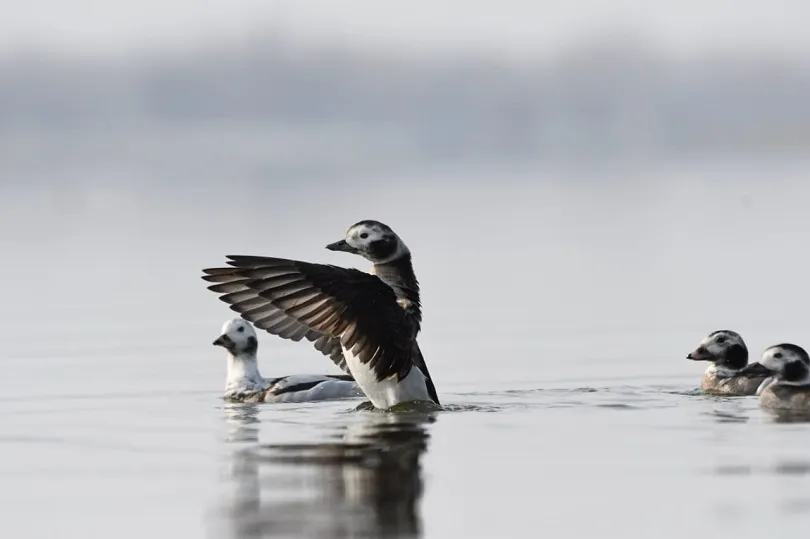After a gap of 84 years, a rare duck species has been found in Wular lake—Asia’s largest fresh lake, bringing cheers to bird enthusiasts in the Kashmir Valley.
The long-tailed duck, Clangula hyemalis, a rare duck species, was spotted by the field officials of Wular Conservation and Management Authority (WUCMA) on 22 January, an official told Kashmir Observer.
The duck is found in European and American continents and assessed as highly vulnerable on the IUCN Red list.
“A group of 5 ducks were seen foraging in Wular lake by field officials of WUCMA and they recorded its details on their field book and captured pictures as well,” said an official.
The WUCMA then shared the pictures with ornithologists for identification and it was discovered that the birds are in fact, rare migrants known as Long Tailed Duck, said Irfan Rasool Wani, Conservator WUCMA.
He said that they expect more species in the lake in coming weeks as they have cleared a major portion of the lake.
“The fresh water gives the migratory birds more surface area of water. So the more we restore the lake, more birds will arrive,” Wani said.
He further added that the duck was spotted near the Banyari area of the district Bandipora.
The Wular lake is one of the largest freshwater lakes of Asia having area 130 Sq km. The WCMA is working on the conservation, restoration and rehabilitation of Wular Lake.
“The lake has a silt and willow infestation problem which is being mitigated by carrying out large scale earth excavation and willow removals.” said the officials.
As per official figures, an area of 4.5 sq km has been restored out of 27 sq kms. The work on remaining 22 is going on. The project is being executed in a phased manner.
In 2018, the UT administration had sanctioned Rs 200-crore Wular Action Plan for the conservation and management of the lake.
The official said that so far one lakh willows have been removed from the lake during restoration works so far and it has generated a revenue of Rs 24 crore to the government. The dredging has increased the capacity of the lake.
The official said that the last record of this bird was reported from Hokersar lake Kashmir in 1939 as mentioned by F.Ludlow in a research paper published in “Journal of the Bombay Natural History Society”.
“It is after 84 years that the bird has been spotted again in Kashmir and has been documented now. There are only a few sites in India which meet the “1% criteria” necessary for the survival and propagation of this duck species,” said WUCMA.
The officials said that much to the delight of Ornithologists, the eco-restoration of Wular lake has created a ray of hope, as a record number of migratory birds have visited Wular lake, this year.
“The rare sightings have been of Common Pochard, Red crested Pochard and Long tailed Duck apart from other common water birds normally seen in other wetlands.,” said the officials.
Wani told Kashmir Observer that they have taken several measures to stop the poachers in the lake and several anti-poaching teams have been put on alert to tackle the poachers.
On December 7 last year, the anti-poaching unit of Forest Protection Force seized a 10 feet long punt gun from the Banks of Wular lake, after poachers fled from the spot in Watlab area of Sopore.
The punt gun is a type of extremely large shotgun used in wetlands to shoot large numbers of waterfowl for commercial use.
“We have taken proactive measures and seized several punt guns from the packers,” Wani added.

